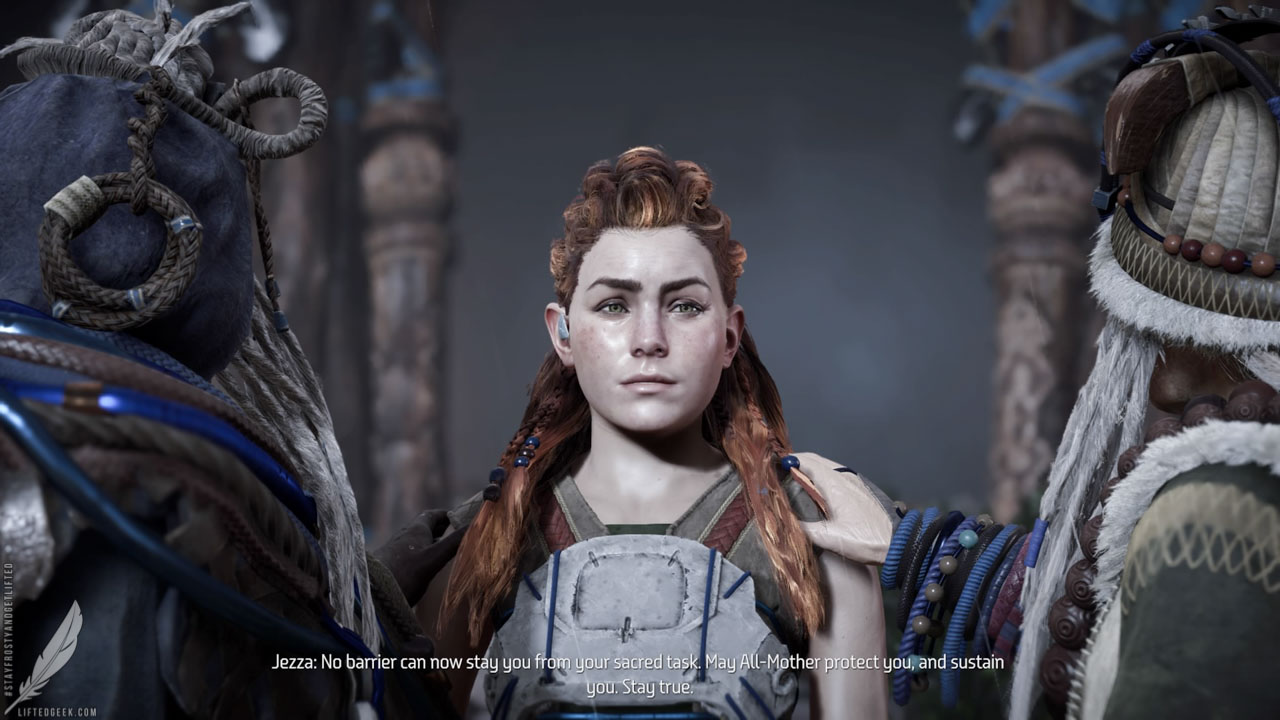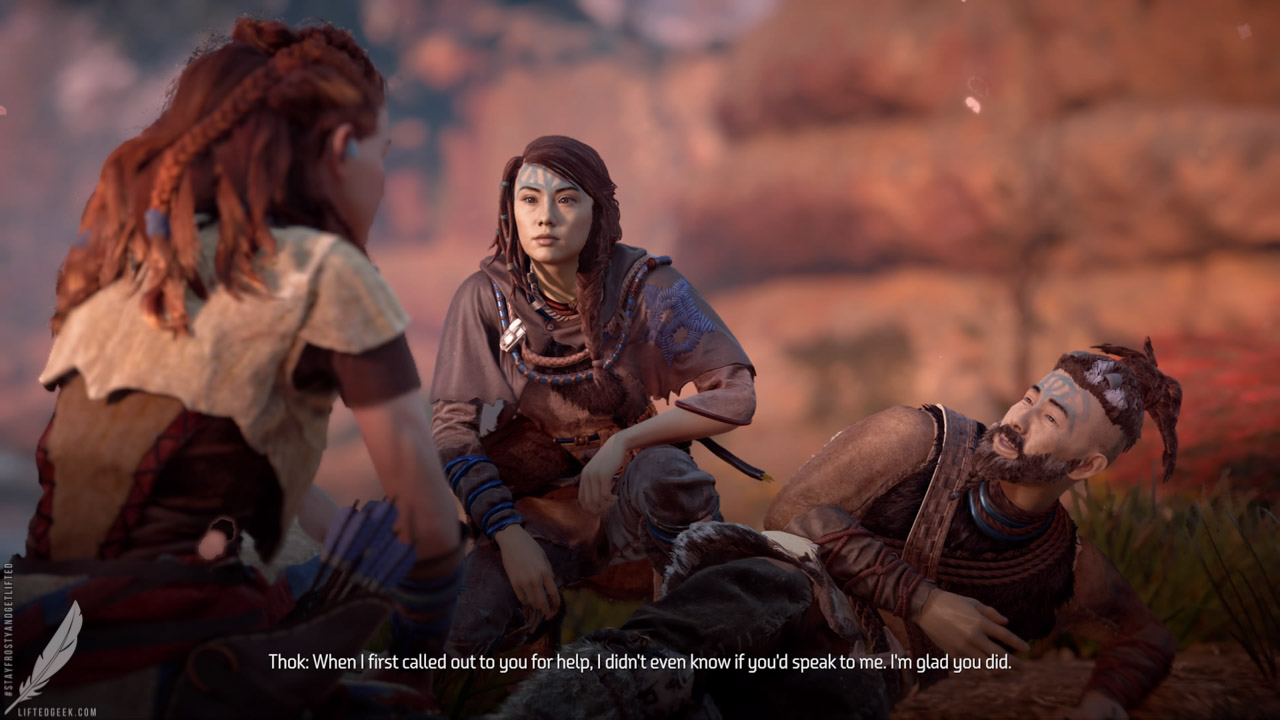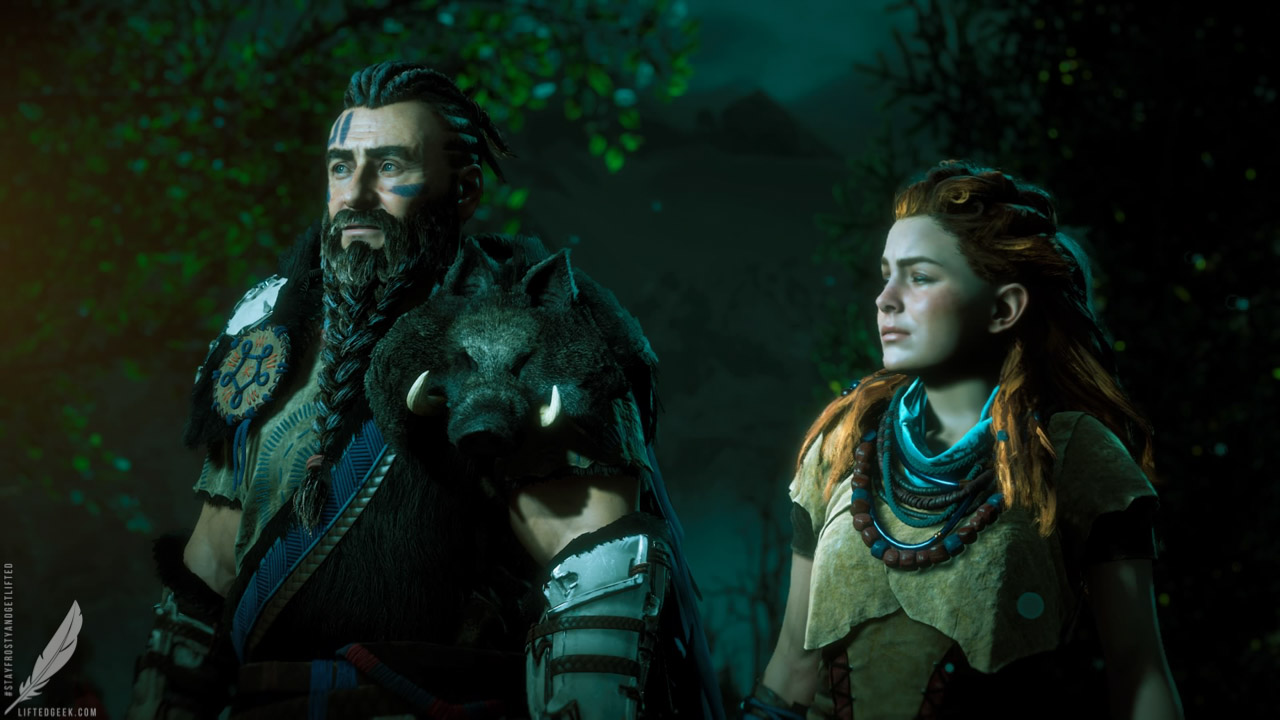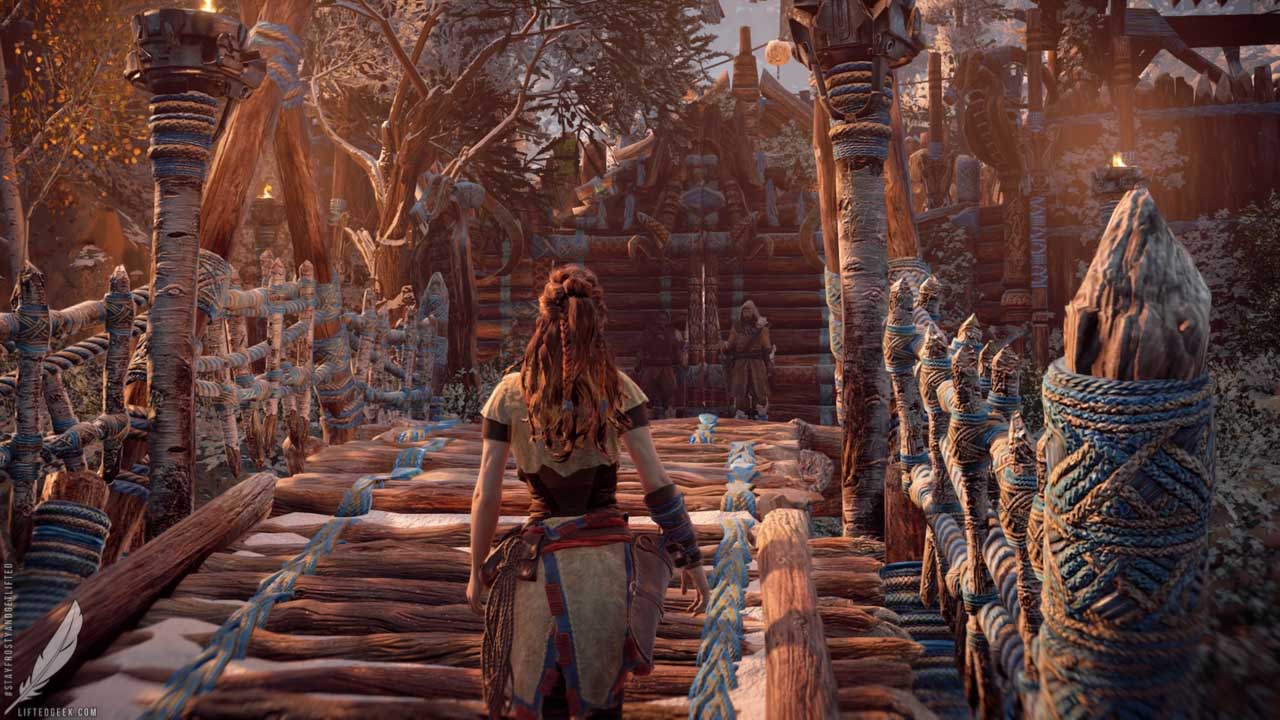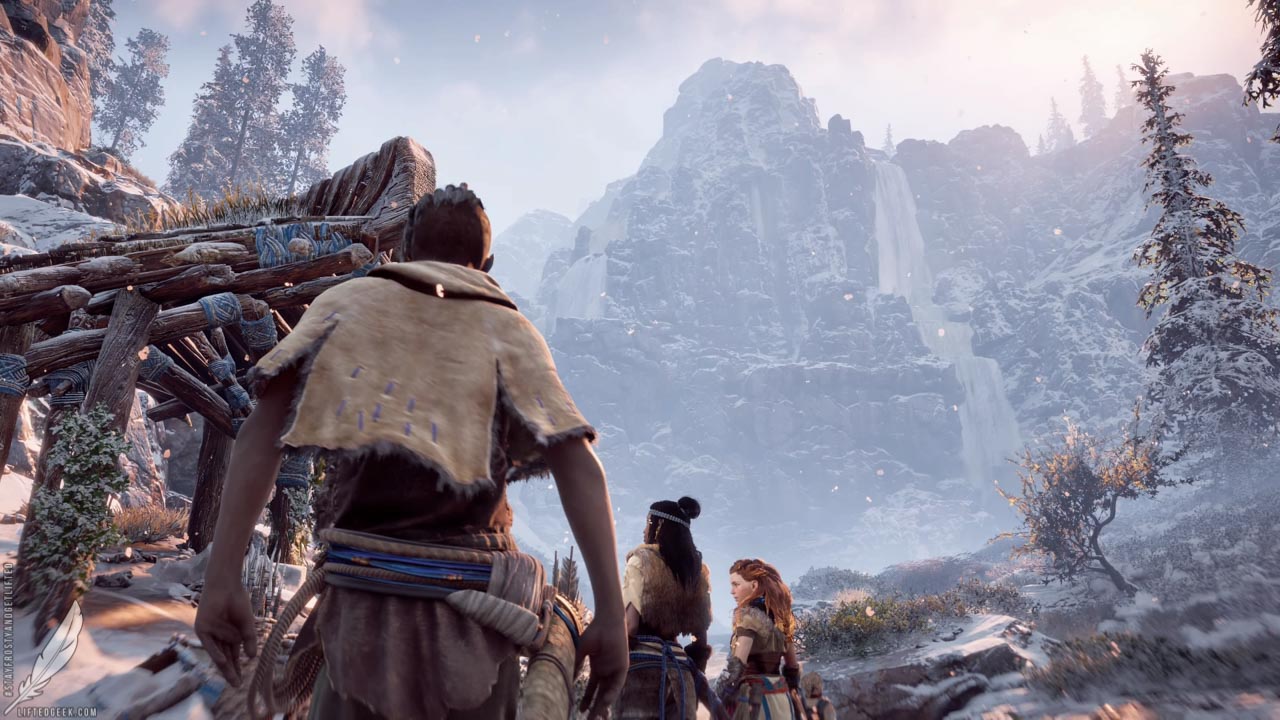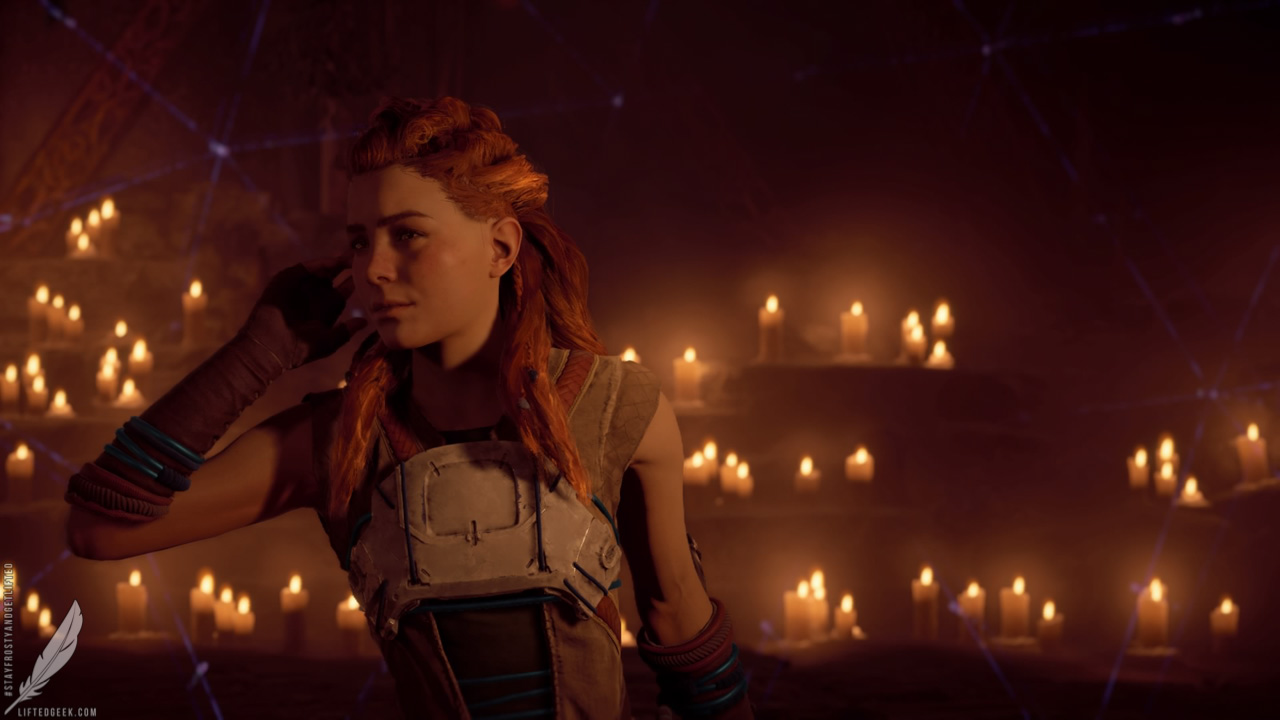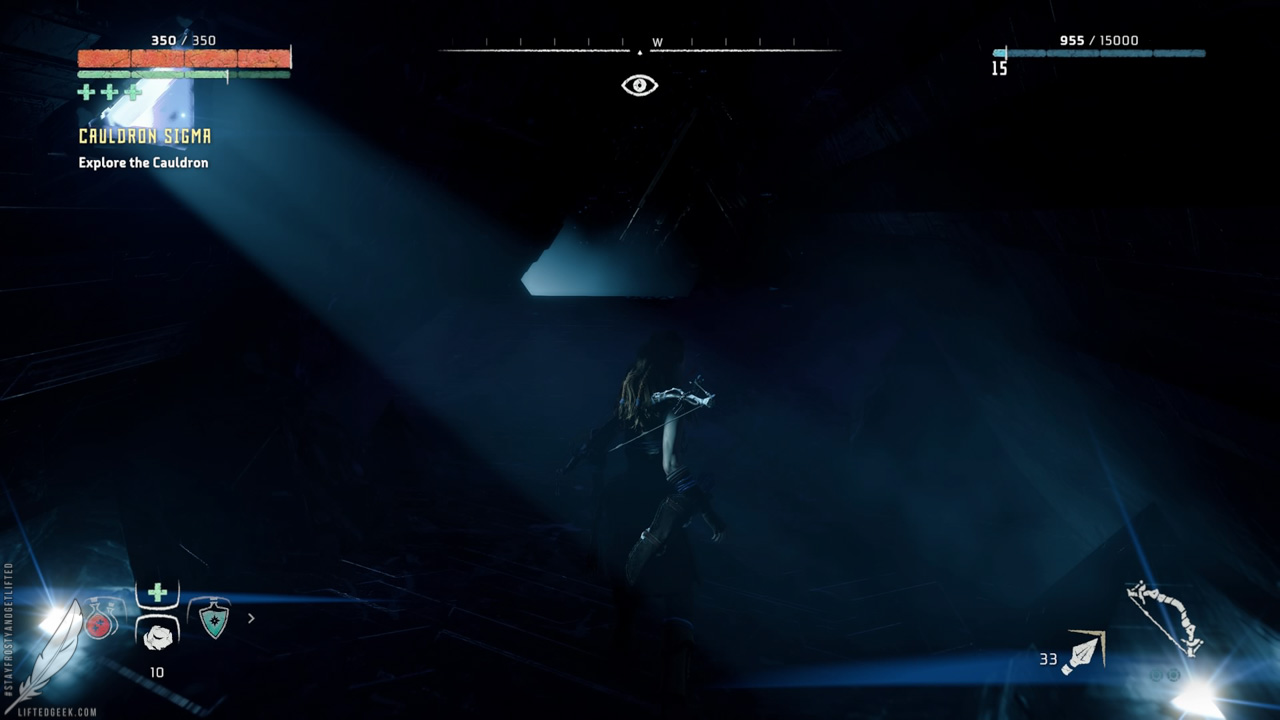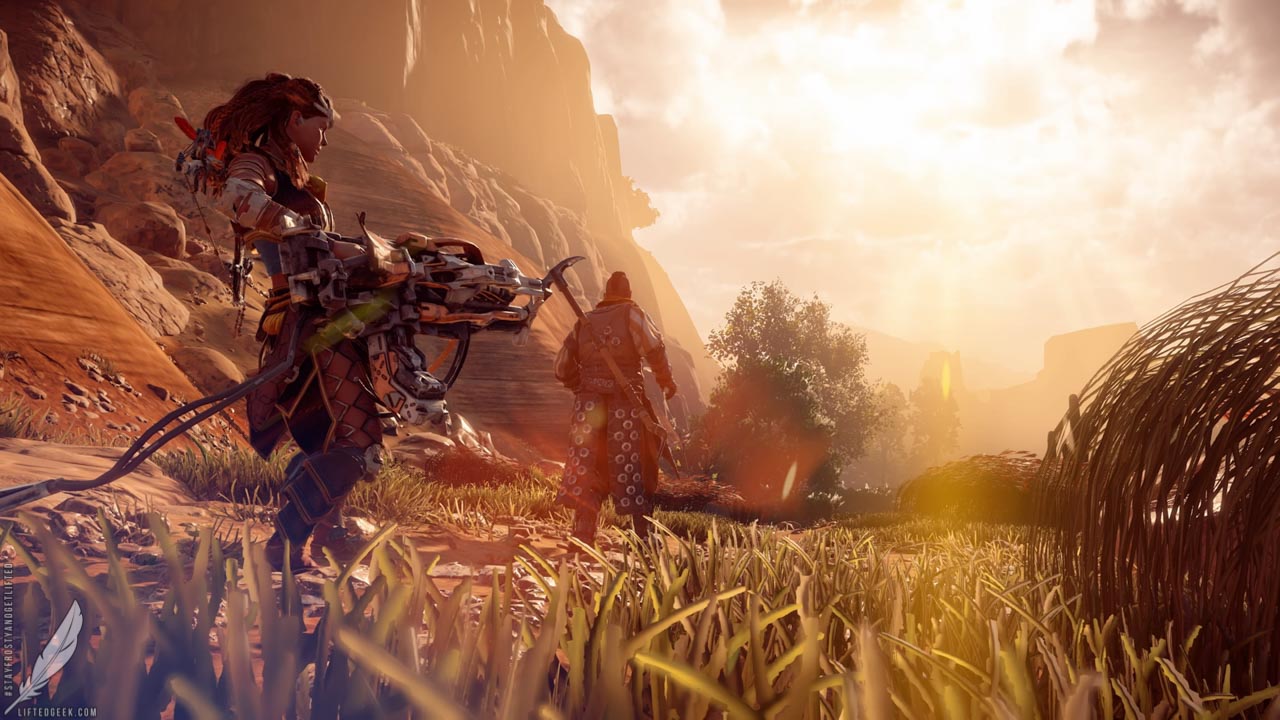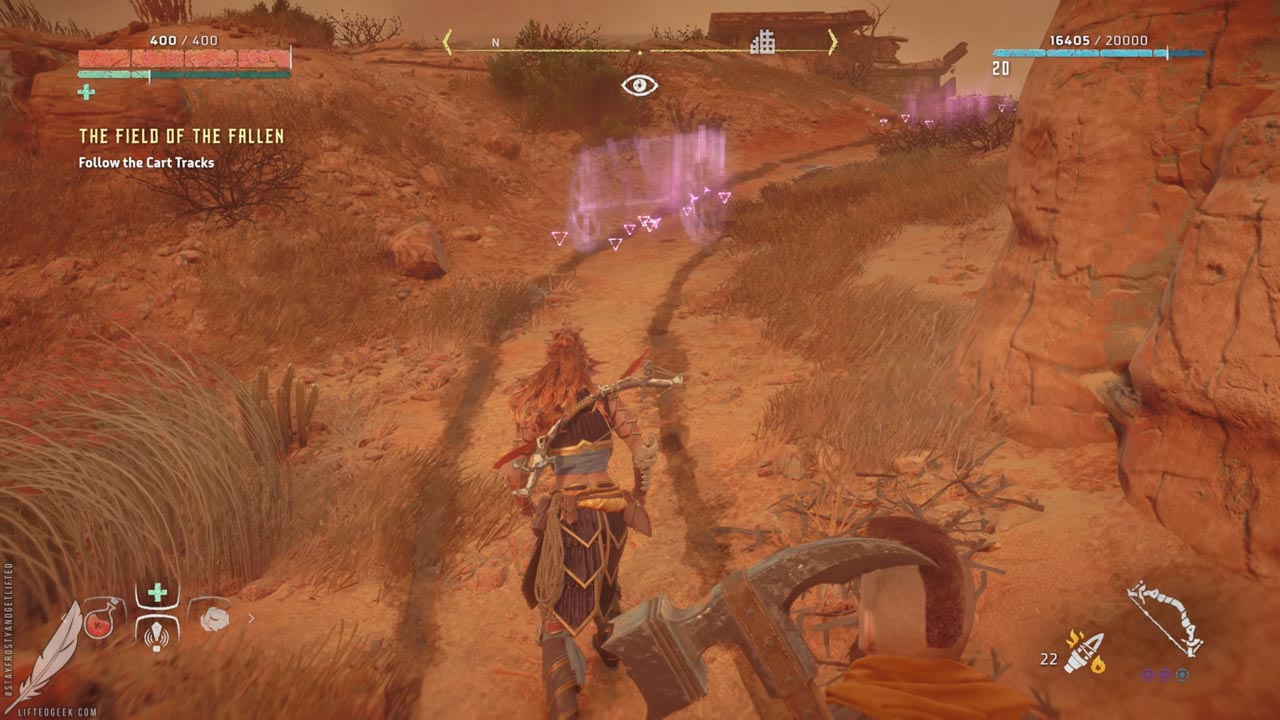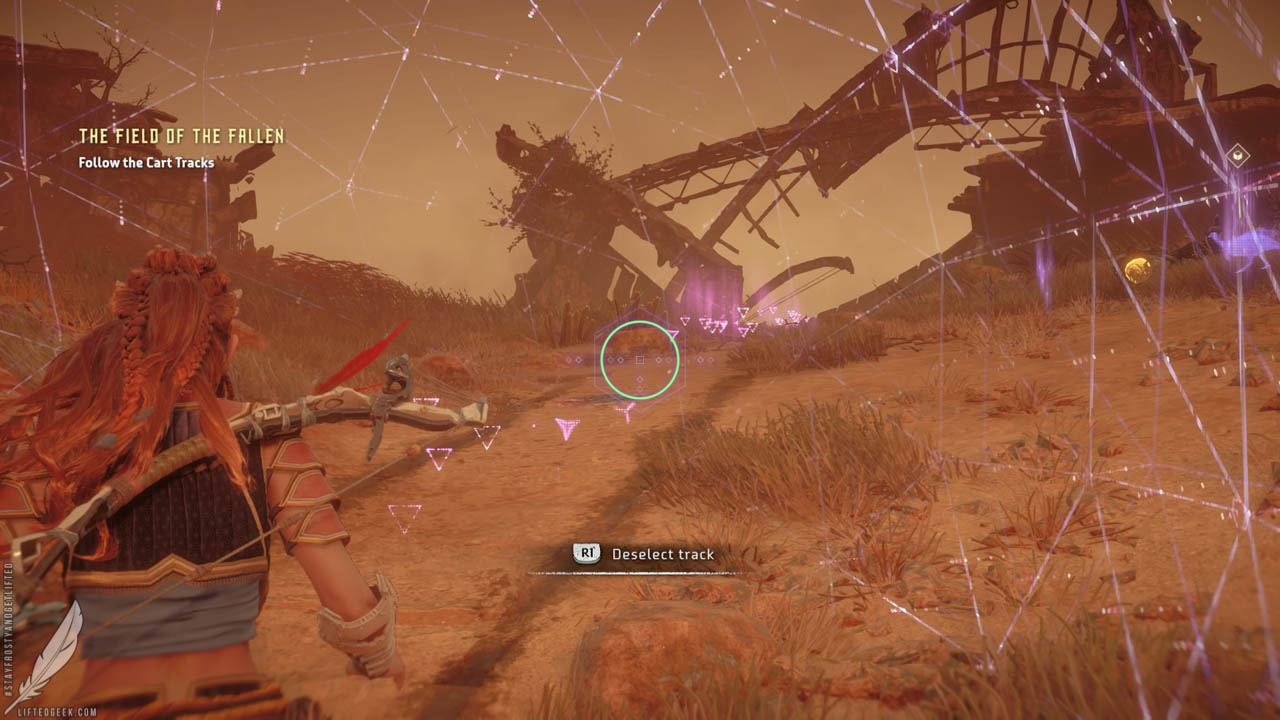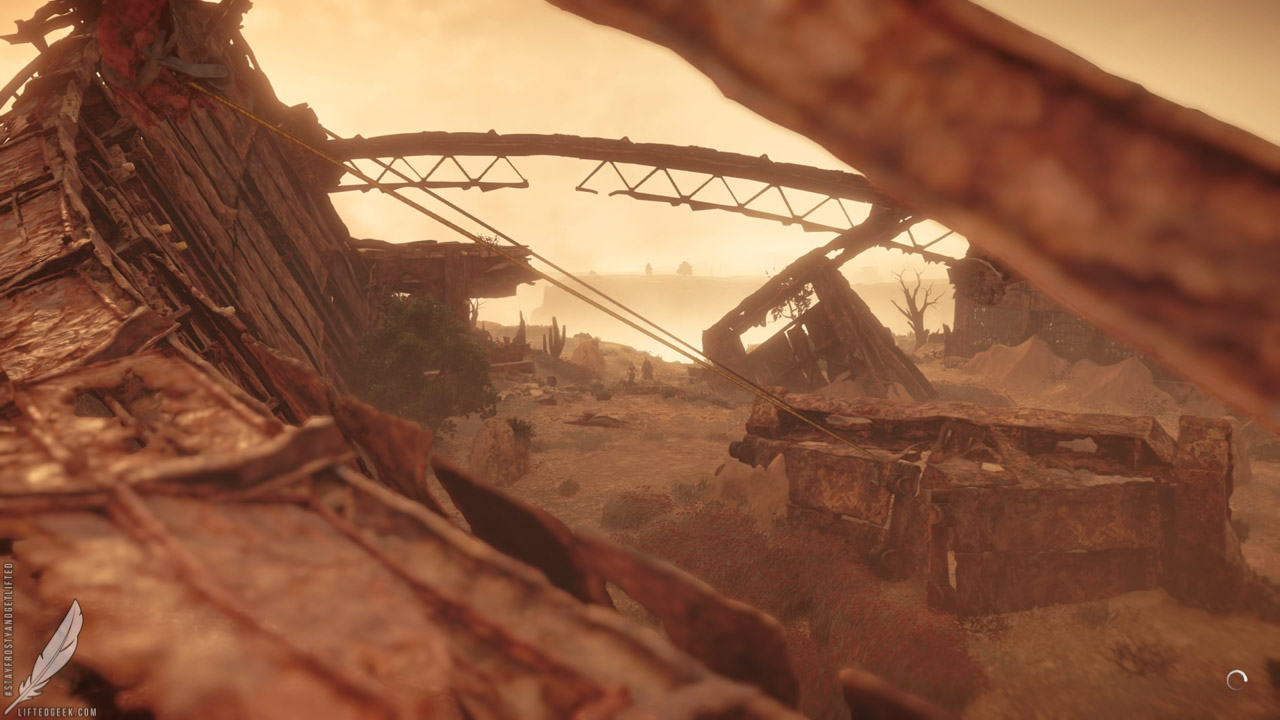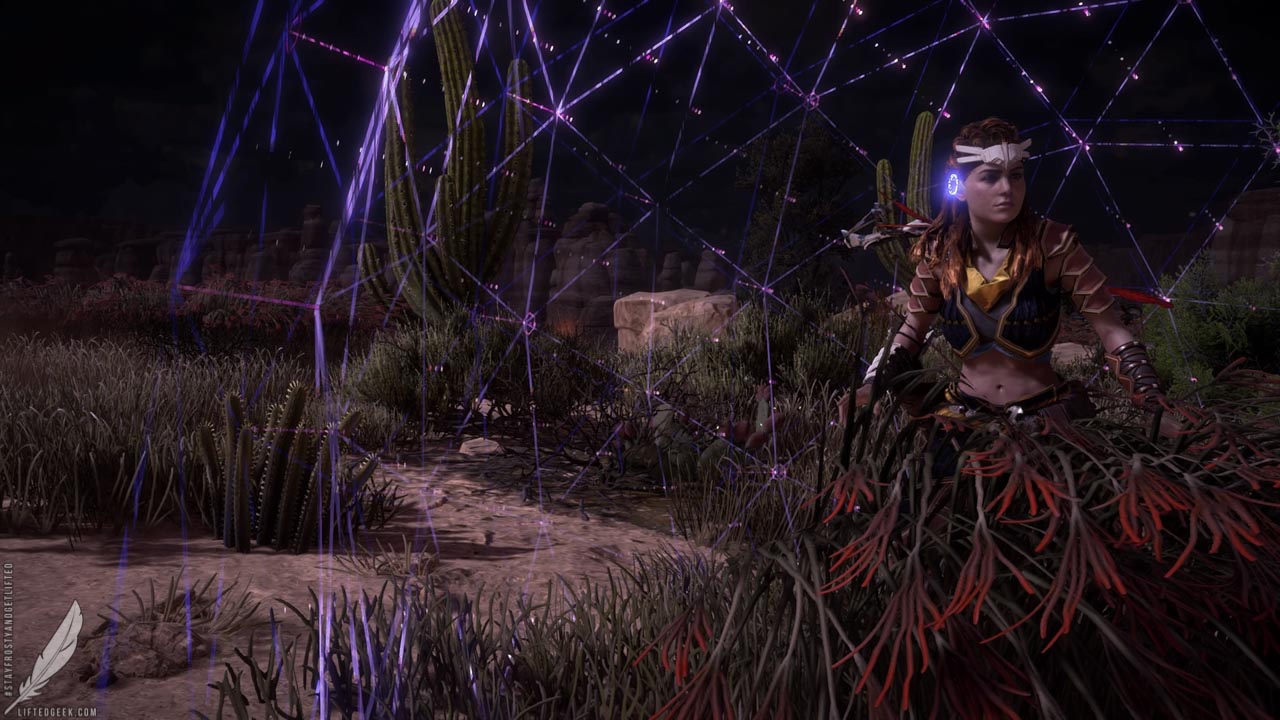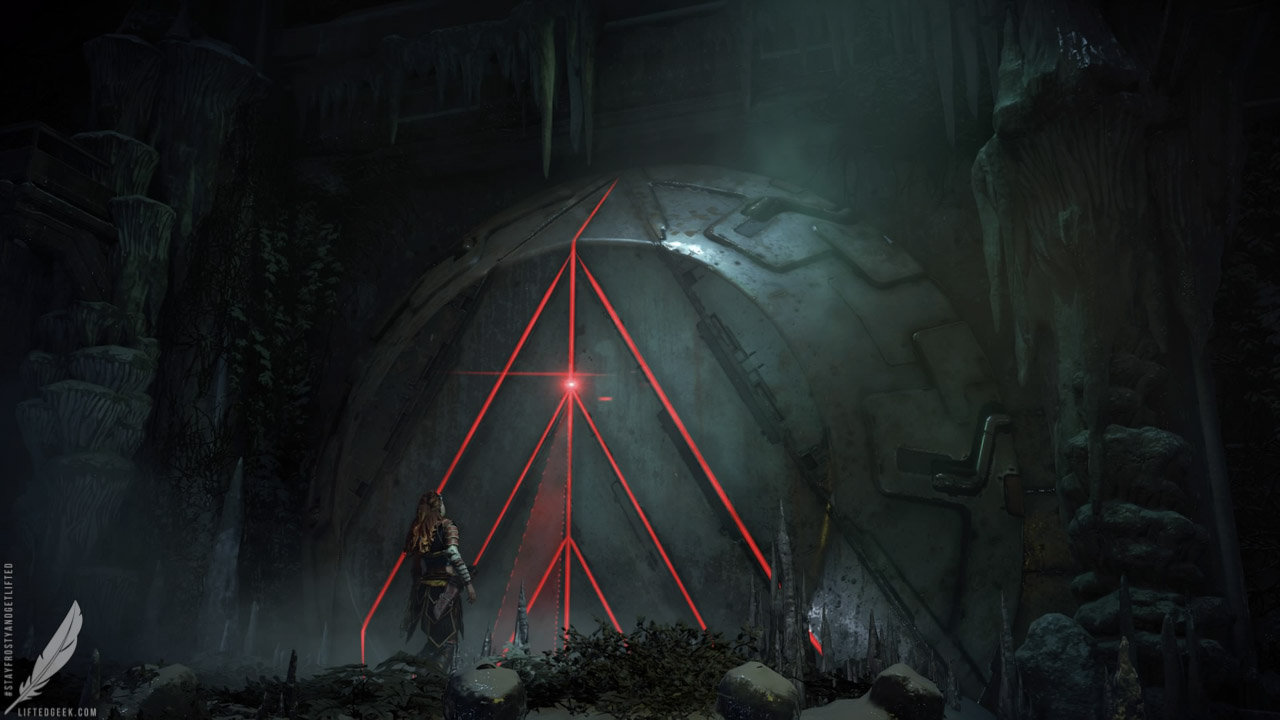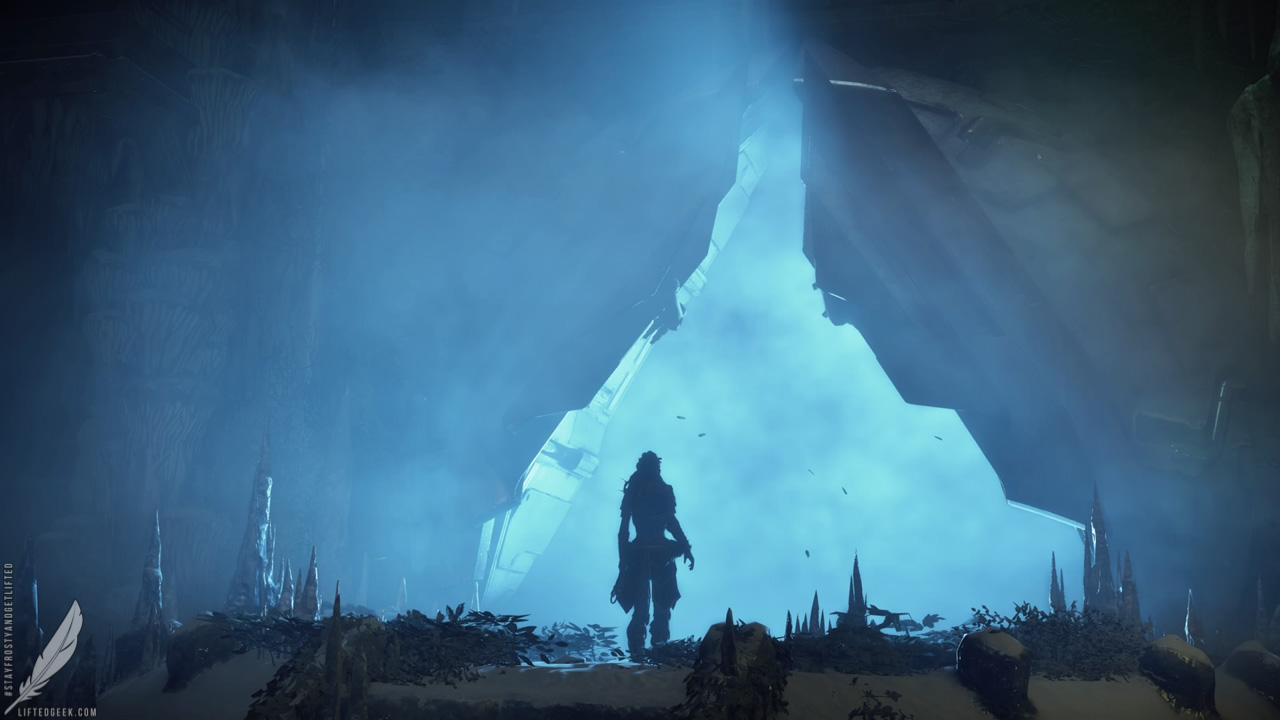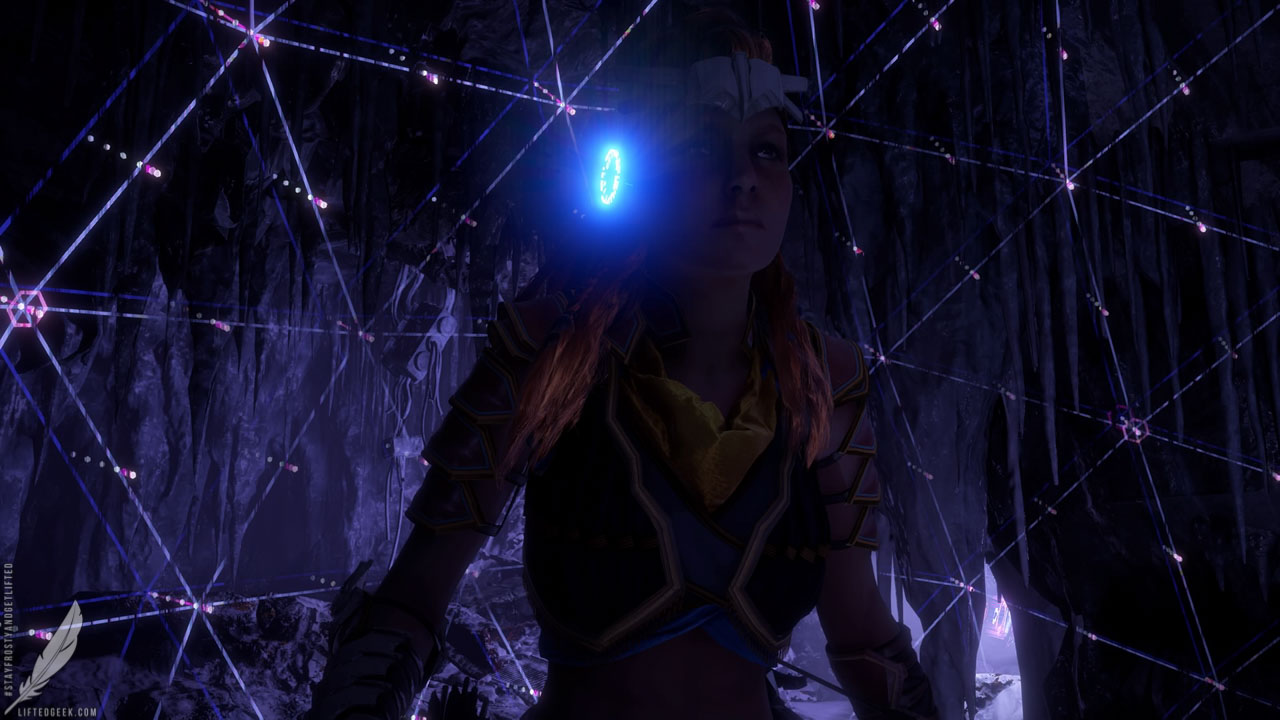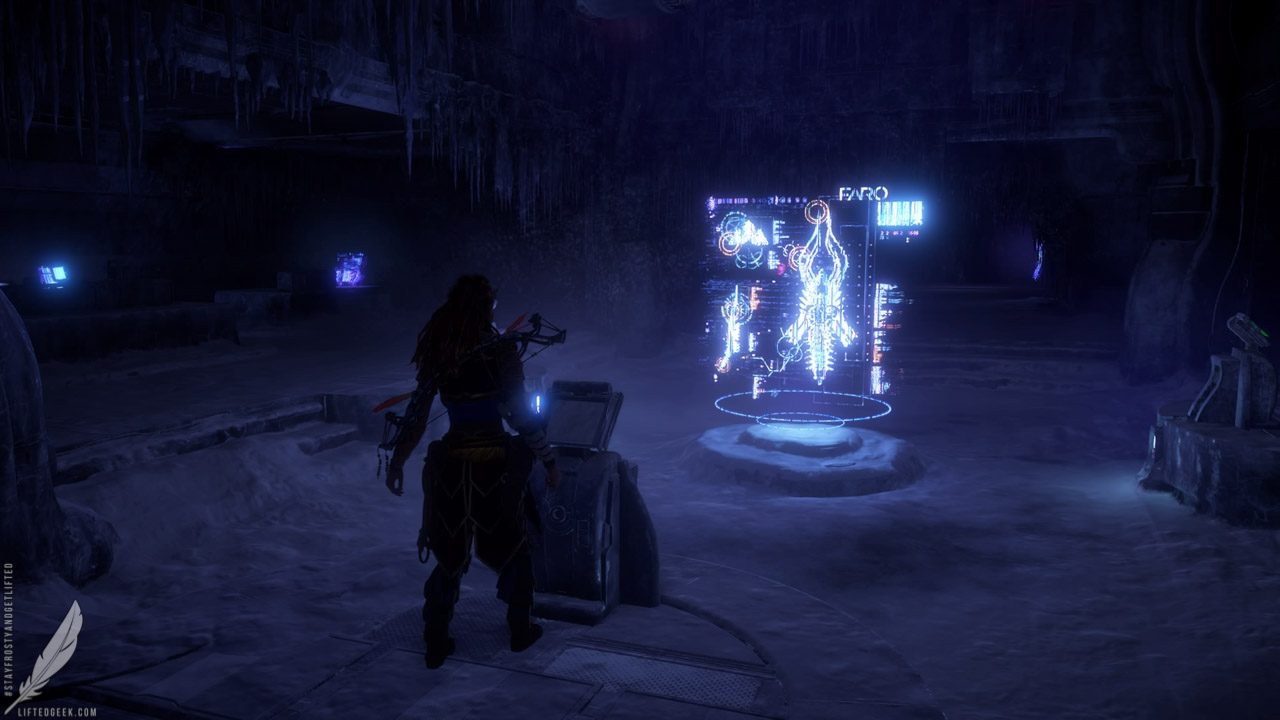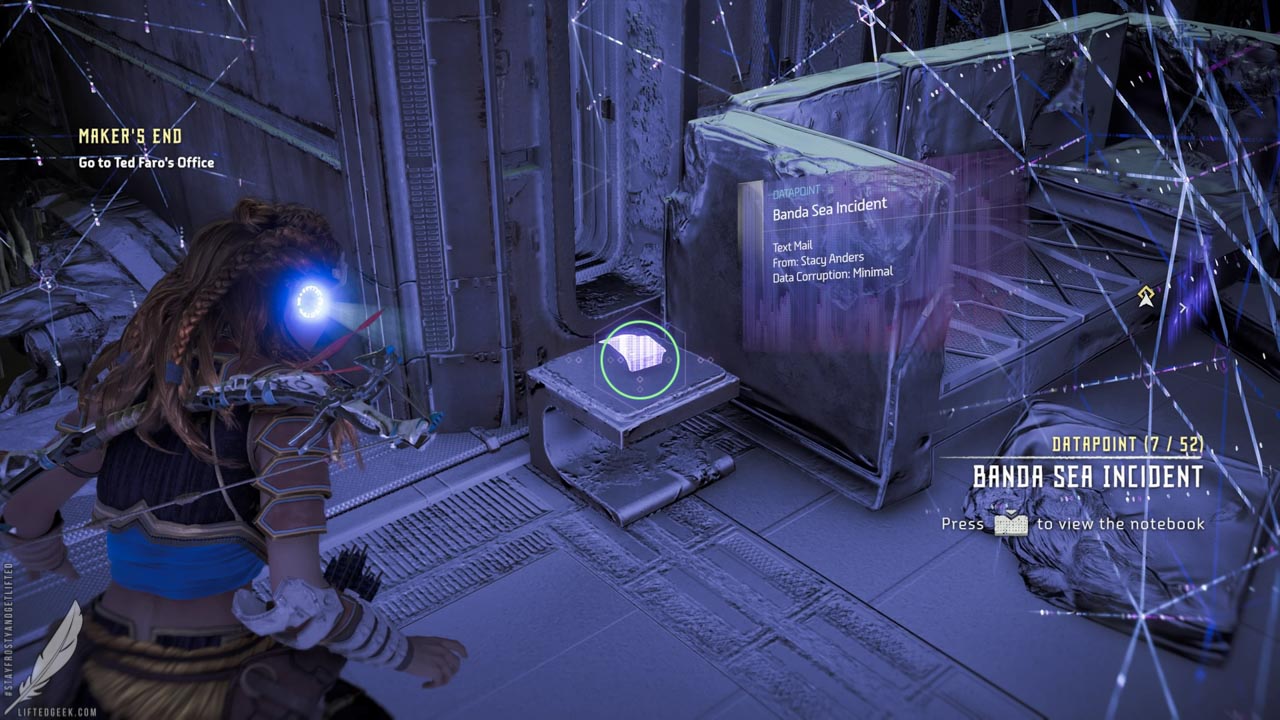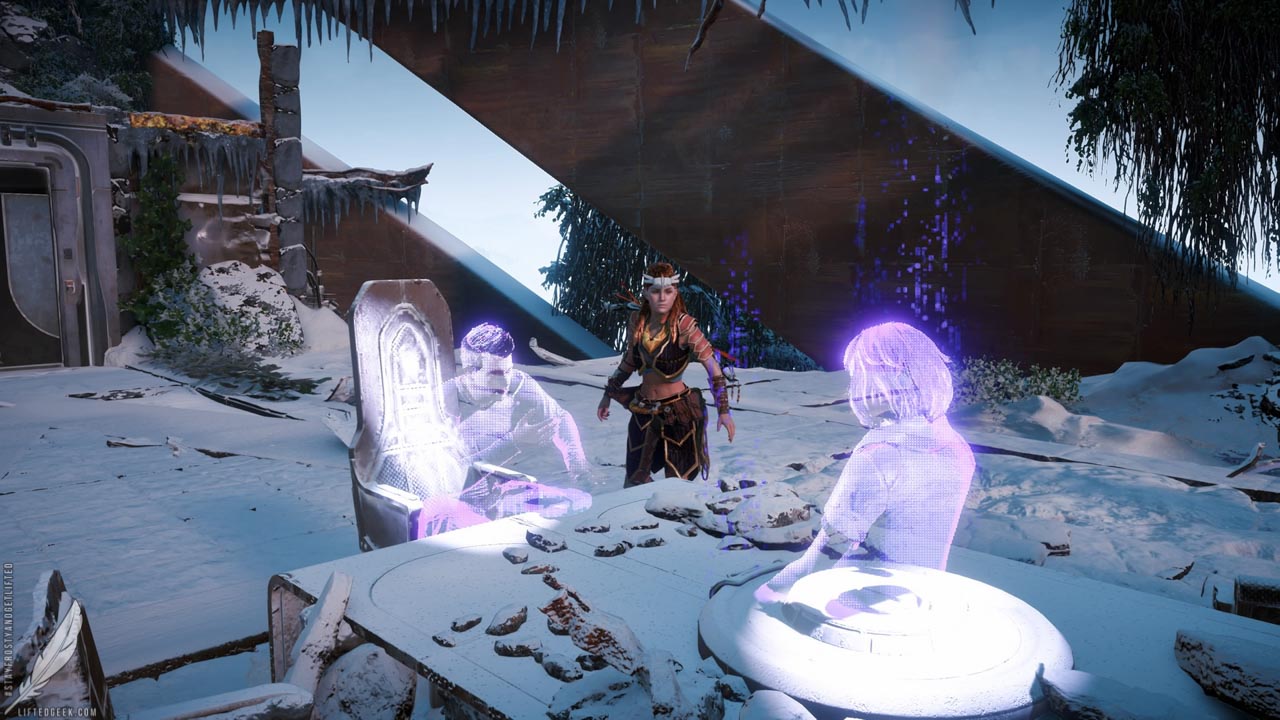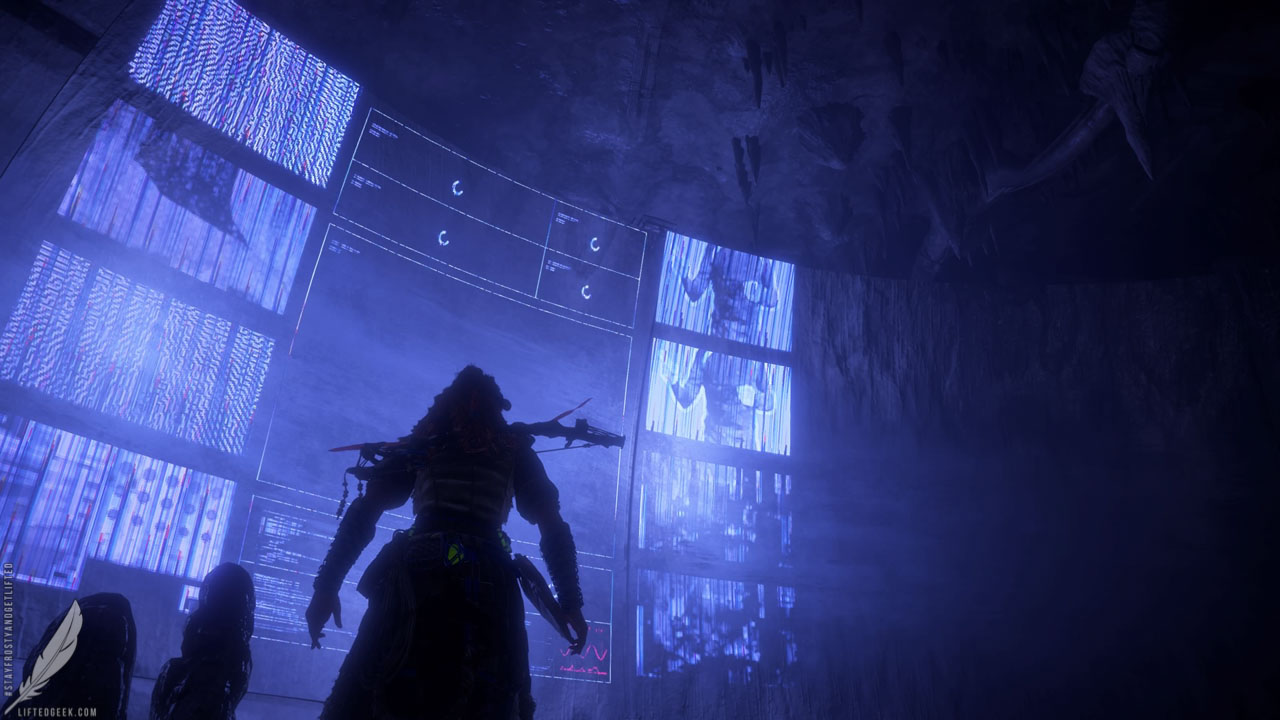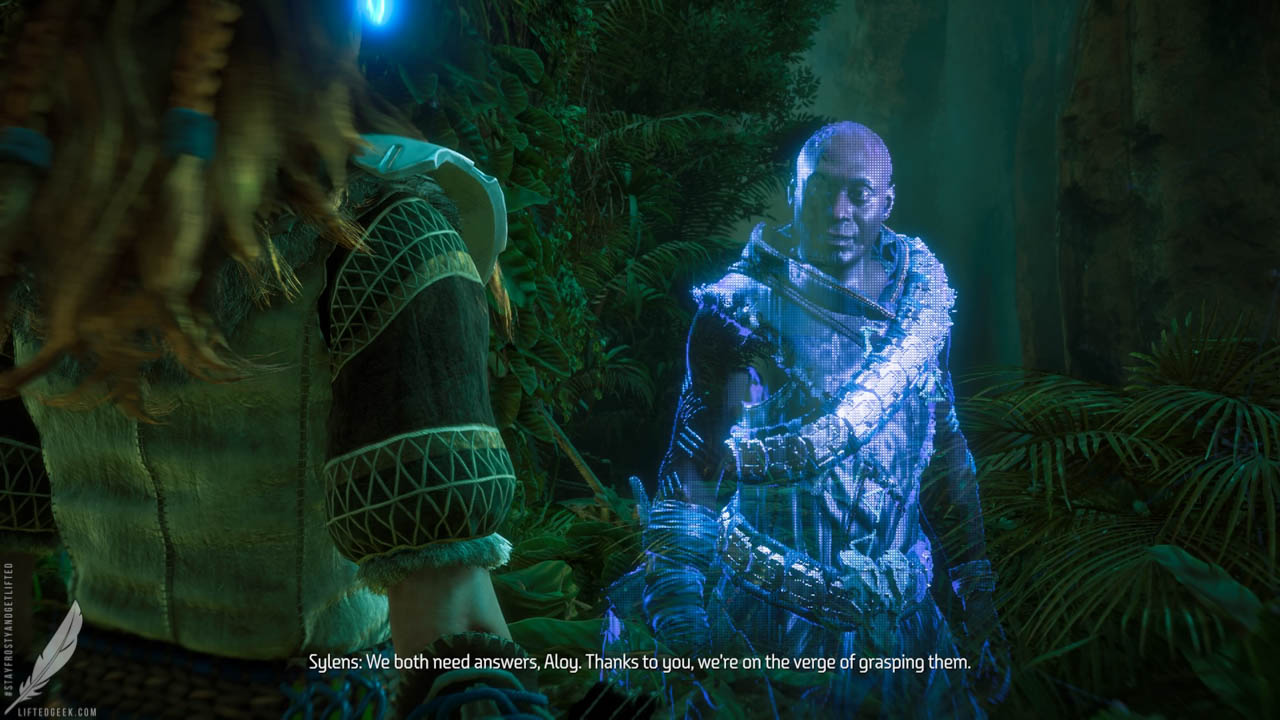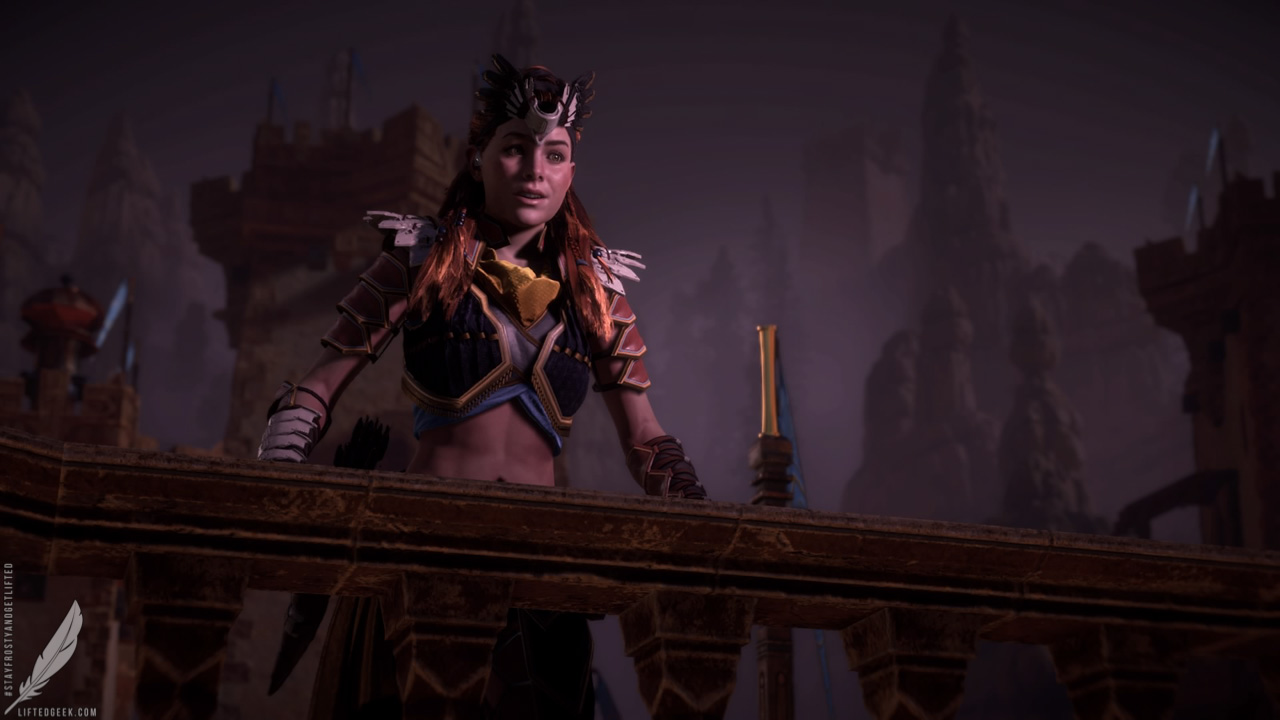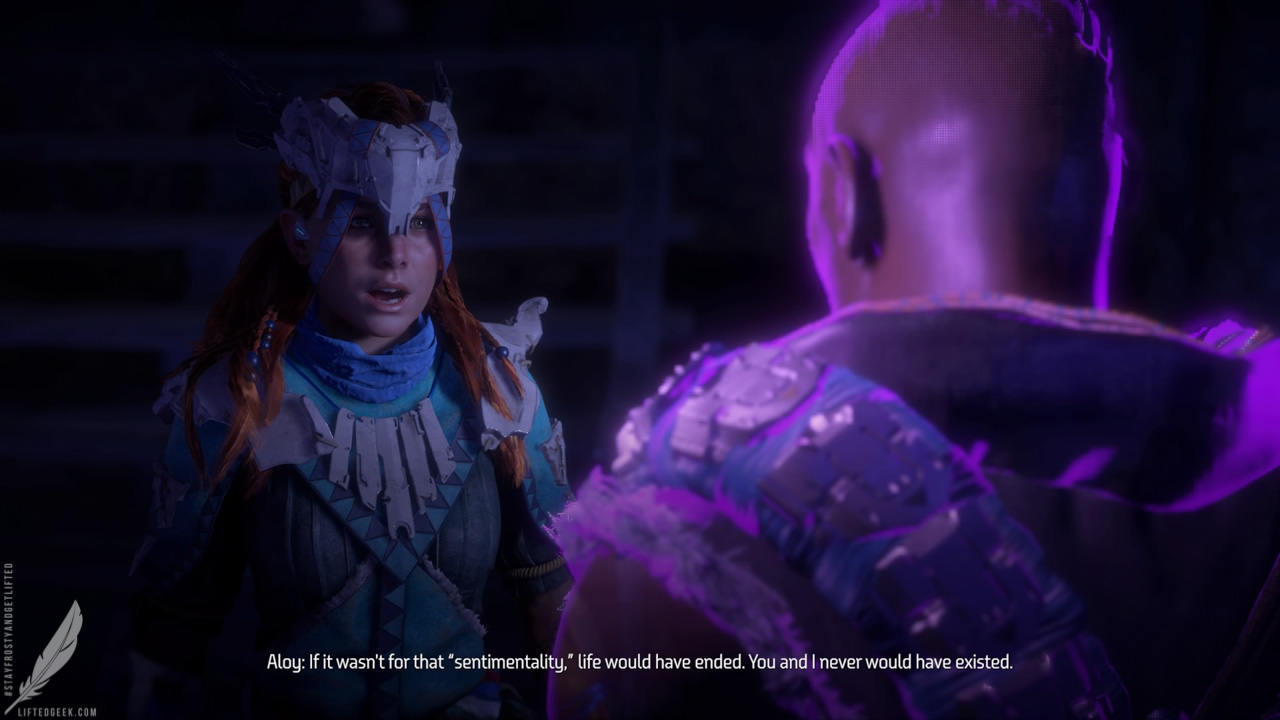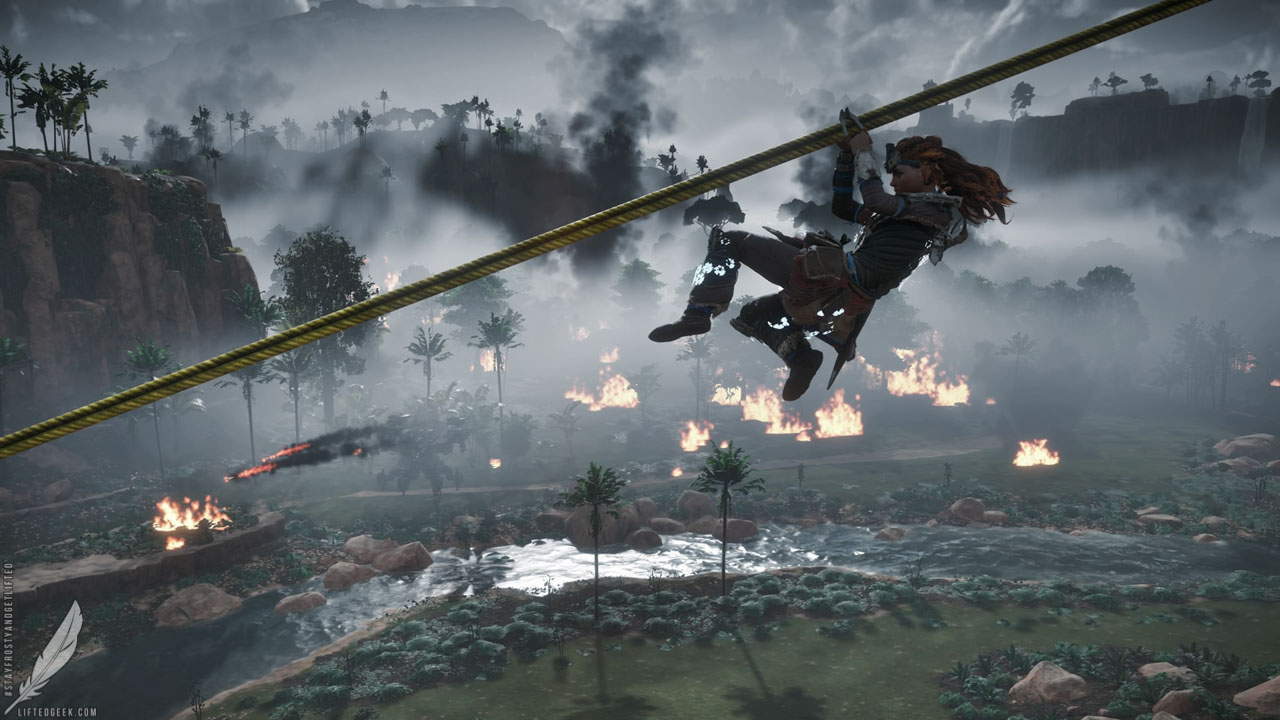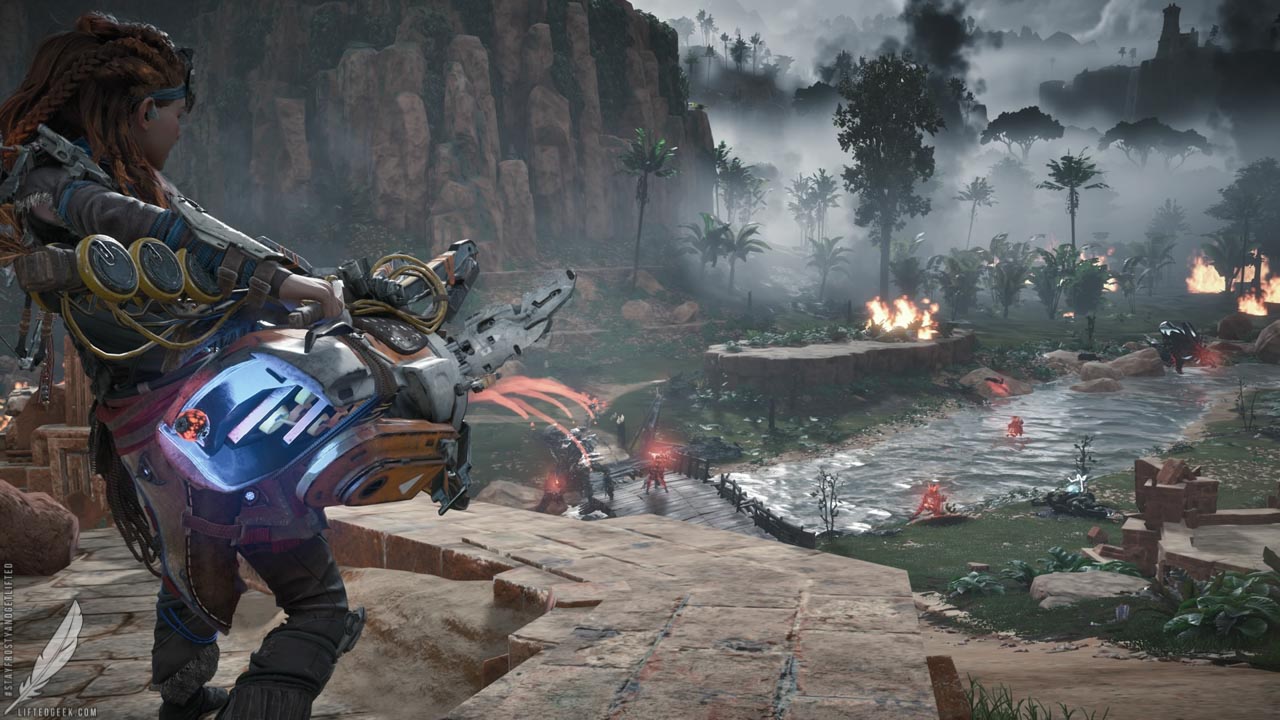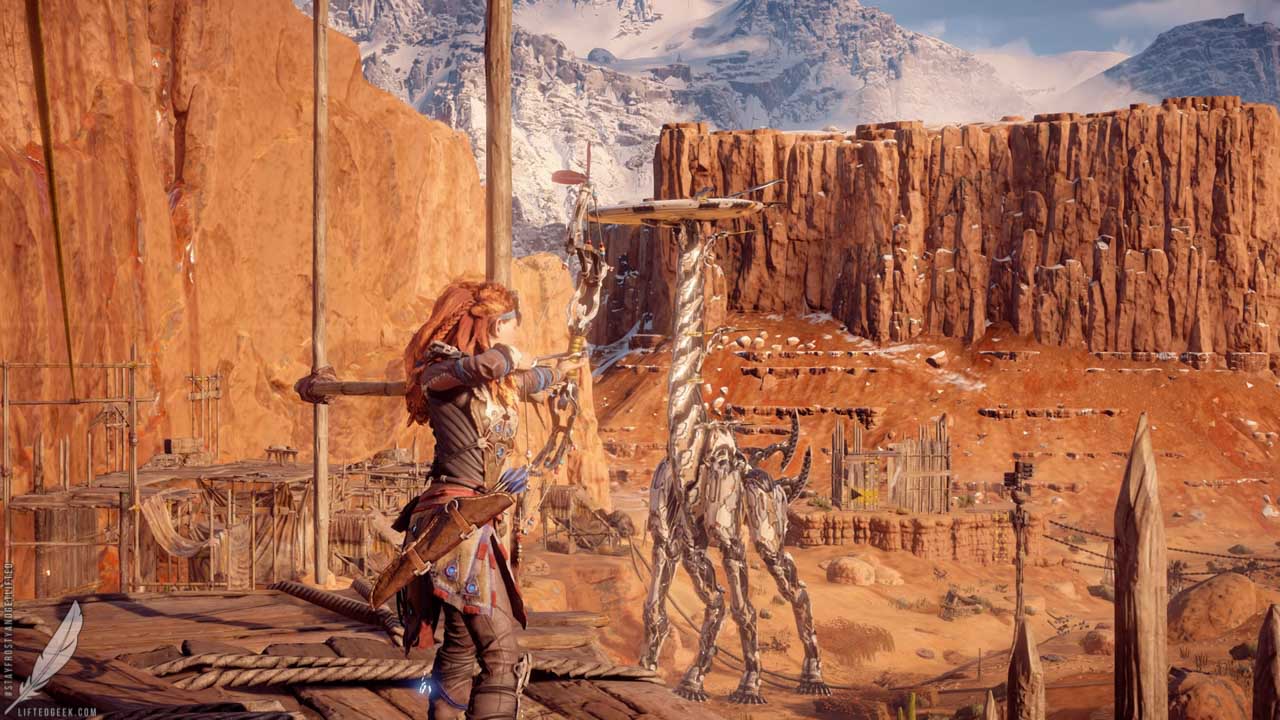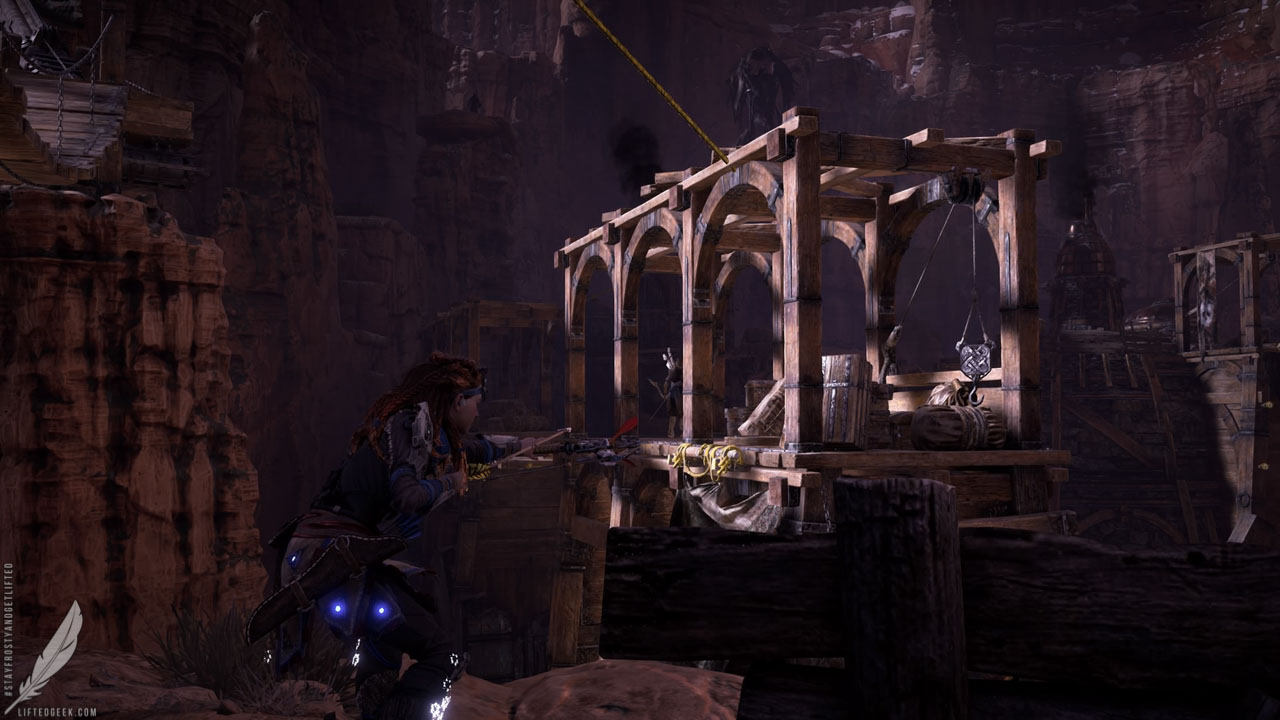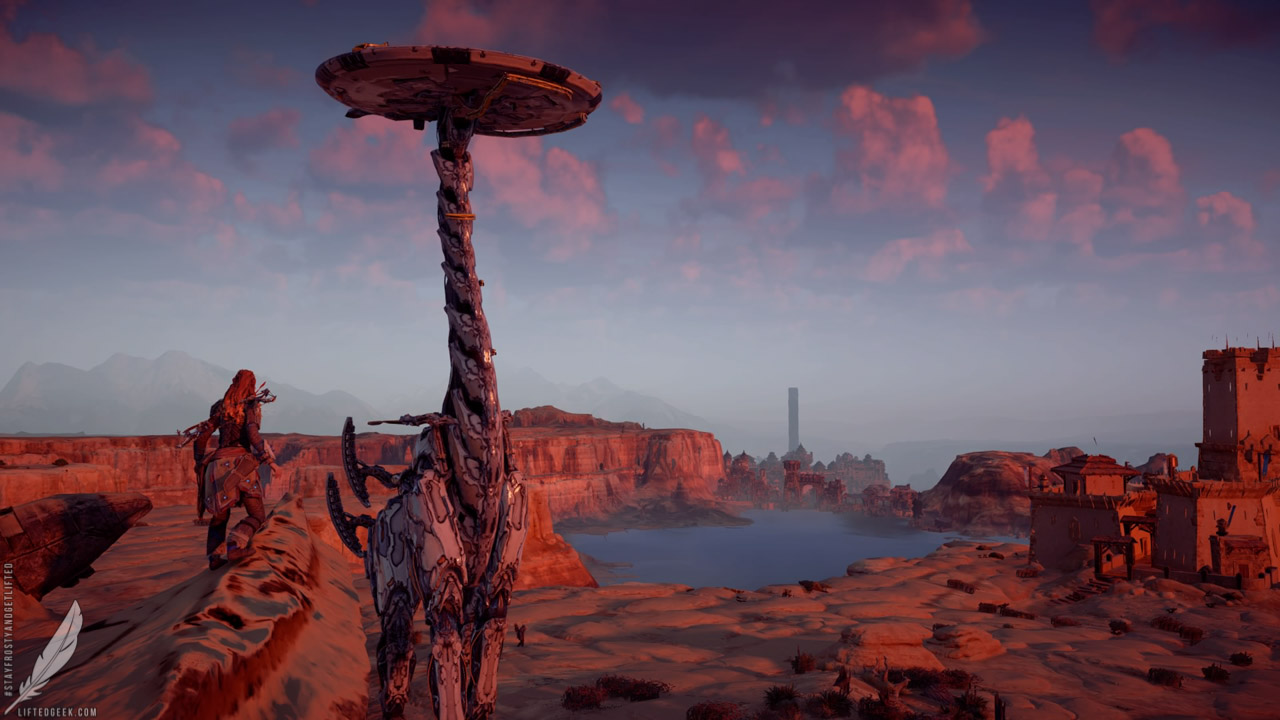Horizon Zero Dawn (REVIEW)
written by Justin Prince (@prince_justin)
In gaming, a new IP can be equally as exciting as it is daunting. On one hand, the new IP could launch a franchise giving players more chances to explore the world… then on another hand it could fail miserably and in some cases cause a studio to fold. For Guerrilla Games (the studio that brought us the Killzone franchise) Horizon Zero Dawn is a chance to step out of a franchise and launch what could be a hot new IP for the current generation of game consoles.
Horizon Zero Dawn follows the exploits of Aloy, a former outcast of her tribe who ends up exploring the land and facing down a threat unimaginable by the people of her village. While at first glance the game’s setting looks to sit firmly in a fantasy realm, the truth is like a happy and balanced mix between fantasy and science fiction. According to the game’s lore, our world has fallen. The machines we created inherit the Earth and now roam the lands as the wildlife. Though weapons seem primitive at first glance, we have bows and spears… trip-line launchers and slingshots… thanks to the technology afforded by the world, these weapons employ a more science-fiction feel despite the high fantasy setting.
Aloy, the game's protagonist
Our protagonist, Aloy, goes from tribe outcast to brave in the early moments of the game. When her tribe is attacked, she ventures beyond her tribe’s sacred borders to find answers littered among foreign villages and ruins left behind from the world before. As the protagonist, Aloy carries the whole story on her back. She becomes a central figure in this world, crafting her own legacy with every machine she fells and every tribe she comes across. Through her adventure we get to see several different sides of Aloy, from the wide-eyed wanderer to the confident hero she becomes near the final chapters. I was never bored playing as Aloy, the more I uncovered about her adventure the more invested I became in seeing this through to the end.
Being deeply invested in the character, I found myself becoming deeply invested by the world’s lore. Aloy hails from the Nora tribe, a largely matriarchal society with strict religious beliefs. They worship the All Mother, a mountain said to be their deity. The Carja is a patriarchal tribe that worships the Sun God. Hailing from a sprawling city, their culture faced some dark times and their citizens divided after the current Sun-King Avad overthrew his murderous and xenophobic father. The Shadow Carja, a radical off-shoot of the Carja who still largely follow the beliefs of the former Sun-King Jiran, act as the darker side of the Carja coin… as for human antagonists these Shadow Carja will be your main non-mechanical foes. Rounding out the tribes are the Banuk and Oseram; the Banuk are nomads who prefer the ice-capped mountains while the Oseram pride themselves as tinkerers seeking to empower themselves with the world’s technology. Each tribe is unique and I can tell that great care was put into fleshing out their histories.
Aloy with Sun-King Avad
Horizon Zero Dawn’s combat utilizes mostly projectile weapons with some melee. Though you have a spear, during the early parts of the game using your spear is better left to attacking an unsuspecting target or defending yourself when the shit hits the fan. The wilderness is littered with tall grass that Aloy uses to conceal herself during encounters. Though enemies can be snuck up on, that luxury doesn’t last long when they figure out where you’re hiding. Approaching combat is entirely up to you, you can go in arrows-a-blazing but that doesn’t always make for the best approach. Most encounters feel like the game is intentionally steering you to a more stealth based approach.
To help out along the way, Aloy can purchase weapons and amor which further increase either her attack prowess or offer better defensive bonuses. Though borrowing much from open-world RPGs, aside from stat boosts in weapons, armor does nothing more than to give Aloy situational bonuses like increased stealth or better protection against elemental damage. Weapons and armor fall intro three classes; uncommon, rare, and ultra rare. They also feature modification slots that allow you to mod weapons and armor with additional boosts. The number of slots vary depending on the rarity of the item. Though there are some rare instances of being given new weapons, usually thanks to a story based event, most of the time you’ll be trading shards and resources for new gear. Aside from bonuses from armor and weapons, Aloy also earns skill points when she levels up. These skills improve her abilities from unlocking the ability to stealth attack an unsuspecting for to carrying more medicinal herbs in her pouch.
sneaky-sneaky
Back to armaments, Aloy is able to equip up to four different weapons on her inventory wheel at any given time. At the press of a button you can pull up the weapon wheel and switch between your bow to a ropecaster then to a slingshot. Swapping weapons is intuitive and even though the controls lacked a way to swap weapons at the press of a button, I never found it clunky or inconvenient. Medicinal items and traps get their own UI menu courtesy of your D-Pad, left and right let you cycle your items while tapping down consumes or tapping up allows you to heal from your medicinal herb stores. What was clunky was how the game handled switching armor. There were moments I found myself having to quickly change my armor from say my Nora Protector set, which offers increased melee damage sustain, to my Carja Blazon armor when a fire-based enemy entered the fray. You can make the argument that changing clothes like that wouldn’t be very realistic in the middle of combat, but with the ability to change armor from the item menu it feels like a wasted chance to give the player on-the-fly ability to swap outfits.
As for the resources, the world affords a wide array of tools. Much of what you need will be readily available in the world around you. The main form of currency are metal shards, shards can be used to trade with merchants for goods but are also used in crafting everything from ammunition to upgrading how much your character can carry. Unlike another post-apocalyptic game like Fallout, the shards in Horizon Zero Dawn act as more than just a replacement for currency. The world is built on bartering and to trade for the best weapons you’ll find yourself not just collecting the appropriate number of shards, but also collecting machine parts from those you hunt or various pelts and bones from the organic wildlife you encounter. The more powerful weapons and armor require not just more shards but harder to obtain machine parts.
lush environments
Combat is tight and incredibly snappy, controls are intuitive and rarely did I ever find myself frustrated by combat. There are three types of core damage at your finger tips; impact damage, tear damage, and elemental damage. Core impact attack damage is great for hitting machine weak-spots, tear damage is meant to strip armor from machines to reveal weak spots or to knock components off, as for elemental damage (split between corruption, fire, ice, and electricity) this is best used to impart various status ailments on foes or to ignite canisters to cause a chain reaction explosion. You have to be smart when deciding how take down a machine, this is afforded by Aloy’s focus, a piece of wearable tech that allows her to survey her surroundings and in the interest of combat… reveals where a machine’s weak-points are. I love it when HUD elements are tied to the narrative, it always feels less cinematic to me in a game when a character can see where enemies are and even read how much health they have left.
Movement is pure elation albeit with some clunky elements that did leave me at times frustrated. Running and moving around is a delight, when you hit the crouch button while running you can slide into cover or slide to avoid taking damage. Dodging further ups Aloy’s survivability when faced with wild attacking machines. If you obtain the abilities after leveling up, you can also slow time when aiming while sliding/jumping as well as slow time when Aloy “concentrates” when aiming her bow. Where movement I feel is lacking is during times you have to climb, hand holds on mountains and cliff sides are severely lacking aside from a few strategic points that benefit the core narrative. This leads you down a straight forward ground-level approach when traversing the land. If they further expanded on the ability to climb up, I feel that would have diversified approaching combat in strategic and interesting ways. Also, the lack of a snap to cover system made position a bit frustrating when taking down human foes.
combat is fast and surprisingly formulaic
Overall, controlling Aloy is damn near perfect. From the first hour to the final, you can feel how the game’s six years of development clearly polished the overall gameplay in Horizon Zero Dawn.
As for the visuals, everything is rendered beautifully. From the diversity in major and minor NPCs to the originality of the game’s machines. Your main foes will be the many metal creatures that prowl the land. From easier to take down foes like Watchers to the T-Rex like Thunderjaw, as varied as the machines are the tactics to take each one down also greatly vary.
Each of the world’s five main tribes are distinctly designed yet familiarly based on many of our own world’s past civilizations. The Nora are hunters who are clearly inspired by Native-Americans while the Carja have their whole Aztec vibe to them. The Banuk remind me of Inuit people while the Oseram feel like they were inspired my 7th grade metal shop teacher. The antagonistic Shadow Carja feel reminiscent of the Roman empire, helmets and all.
The Nora, very reminicent of Native-American civilization
There are some hiccups in the animation that do leave me wanting. There are times when Aloy’s facial expressions feel wooden or at times inconsistent with the subject matter. This is a barely noticeable gripe, but one I feel I do need to address… mostly because I never notice the same in other NPCs, only when the camera zooms in on Aloy’s face. Another small gripe involve the pre-rendered cutscenes. There are scenes where the narrative utilizes the real-time engine to tell the story, but during the pre-rendered scenes… regardless what weapon you have equipped or the armor you are wearing, you will always default to a basic Nora hunter garb. While this isn’t totally jarring and while I can understand the advantages of pre-rendered scenes, the ability to control the lighting and minimize the chance that glitchy elements from the real-time engine invade the scene, it does pull you out of the immersion when your main character goes from wearing one piece of armor but then in the next scene she’s wearing something completely different.
The world we get to play in is huge, densely populated with all sorts of inhabitants from natural wildlife, mechanical wildlife, and every manner of friendly and hostile NPC. Horizon Zero Dawn is an experience that will have you going out of your way to explore the world around you. Though you unlock fast travel points when discovering campfires, I found myself walking across the world more often than fast travel. Sometimes you really gotta soak it all in, what make it interesting was that traversing the land was rarely a chore.
Along the way, the world also affords you all manner of distraction to keep you busy outside the main narrative. Clearing bandit camps, hunting corrupted machines, side-missions, hunting lodge missions, and collectible remnants of the world that came before all litter Aloy’s post-apocalyptia. The most entertaining side-missions were optional Cauldrons. These sites are remnants of the world that came before and where all these machines are born. The combination of light puzzle solving and combat in an unfamiliar setting made these optional side-missions one of my personal highlights of the game, shame there weren’t more of them to explore.
VERDICT
Horizon Zero Dawn is an experience! Breathtaking visuals, a sublime combat system, truly likable characters, and a creative narrative make this game stand out. Furthermore, it stands as an example of what this industry truly needs… more innovation and new IPs. I get that new IPs are scary for developers, but in a world dominated with sequels and reboots, it’s nice to get a chance to play a game that wasn’t part of a long standing series. Personally, I haven’t been this invested in a new IP since I played the original Mass Effect, and that my dears is saying something.



